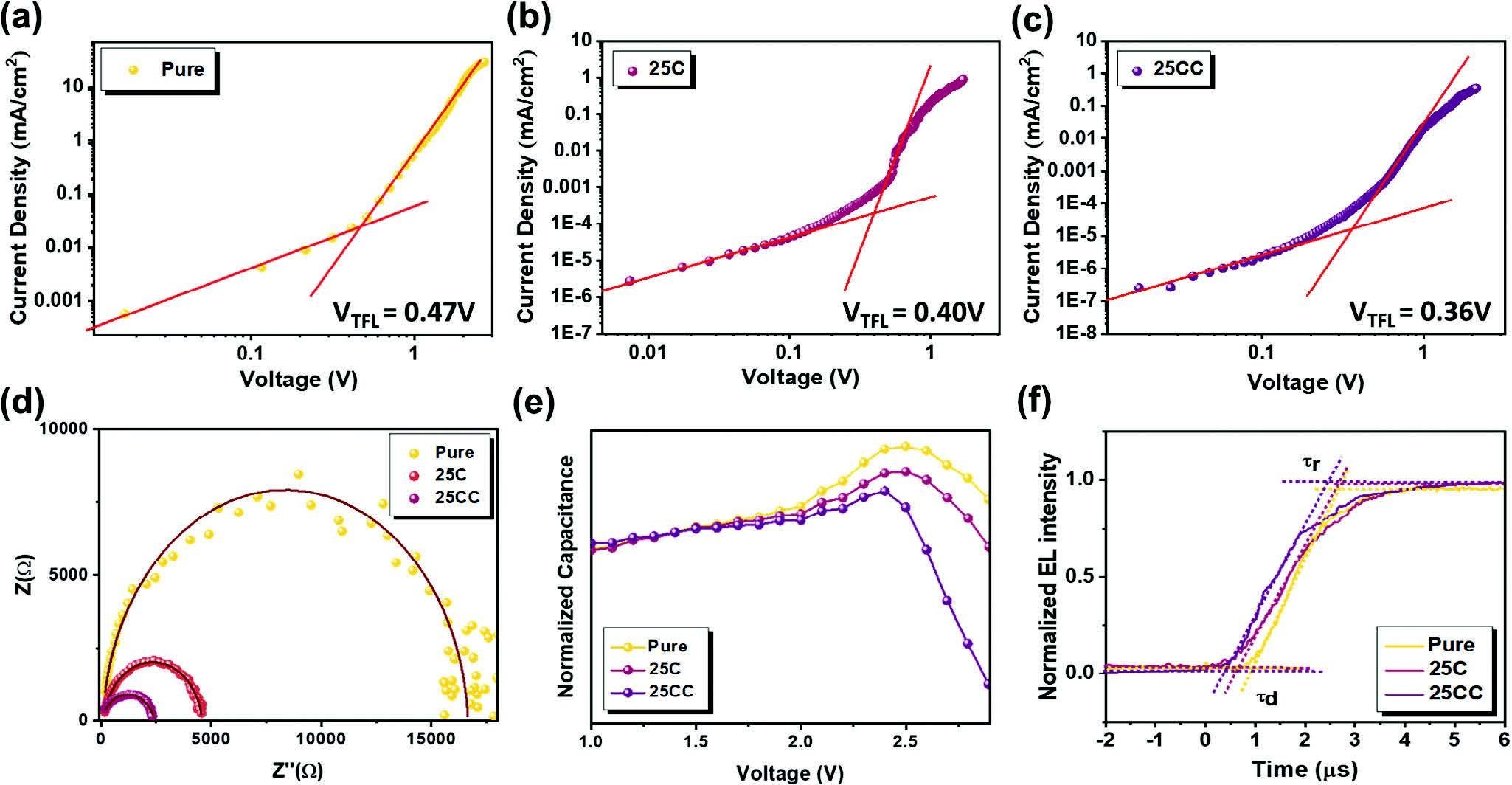Enhancing the Performance of 2D Tin-Based Pure Red Perovskite Light-Emitting Diodes through the Synergistic Effect of Natural Antioxidants and Cyclic Molecular Additives
C.-H. Chen, M.-H. Yu, Y.-Y. Wang, Y.-C. Tseng, I. Chao, I. Ni, B.-H. Lin, Y.-J. Lu, C.-C. Chueh, Small 2024, 20, 2307774. https://doi.org/10.1002/smll.202307774
The research investigates the enhancement of 2D tin-based pure red perovskite light-emitting diodes (PeLEDs) using a dual-additive approach involving natural antioxidants and cyclic molecular additives. Specifically, ascorbic acid (VitC) is used to prevent the oxidation of Sn²⁺ to Sn⁴⁺ and improve film quality, while 18-Crown-6 is added to capture excess ions and synergistically reduce nonradiative recombination pathways. This combination significantly improves the PeLEDs' performance, achieving a maximum external quantum efficiency of 1.87%, which is approximately nine times higher than the pristine device. The study highlights the potential of environmentally friendly additives to enhance the stability and efficiency of Sn-based perovskite films for sustainable optoelectronic applications.
Use and Value of Paios
Paios, the all-in-one characterization tool from Fluxim, was employed for capacitance-voltage (C-V) measurements and transient electroluminescence (EL) decay measurements.
The C-V measurements provided insights into the charge injection and recombination processes in the PeLEDs, indicating that the 25CC film (with both VitC and 18-Crown-6) had the highest charge transfer efficiency and lowest trap density.
Transient EL measurements revealed that the 25CC devices had the fastest response time and lowest trap density, confirming the superior carrier mobility and performance

